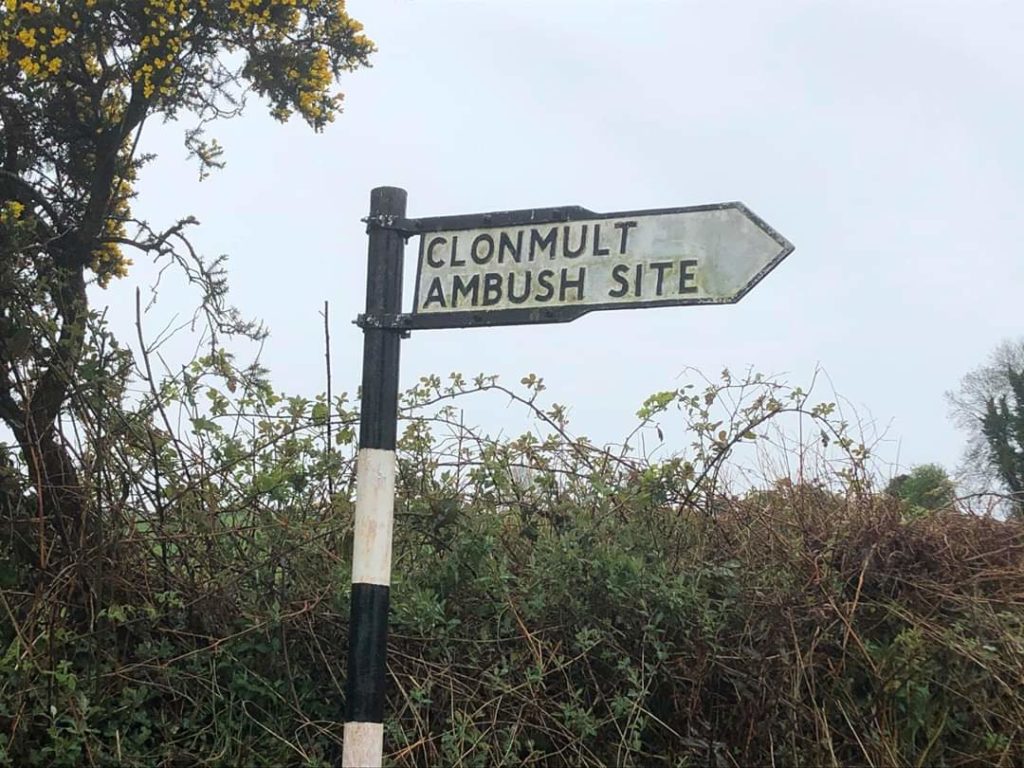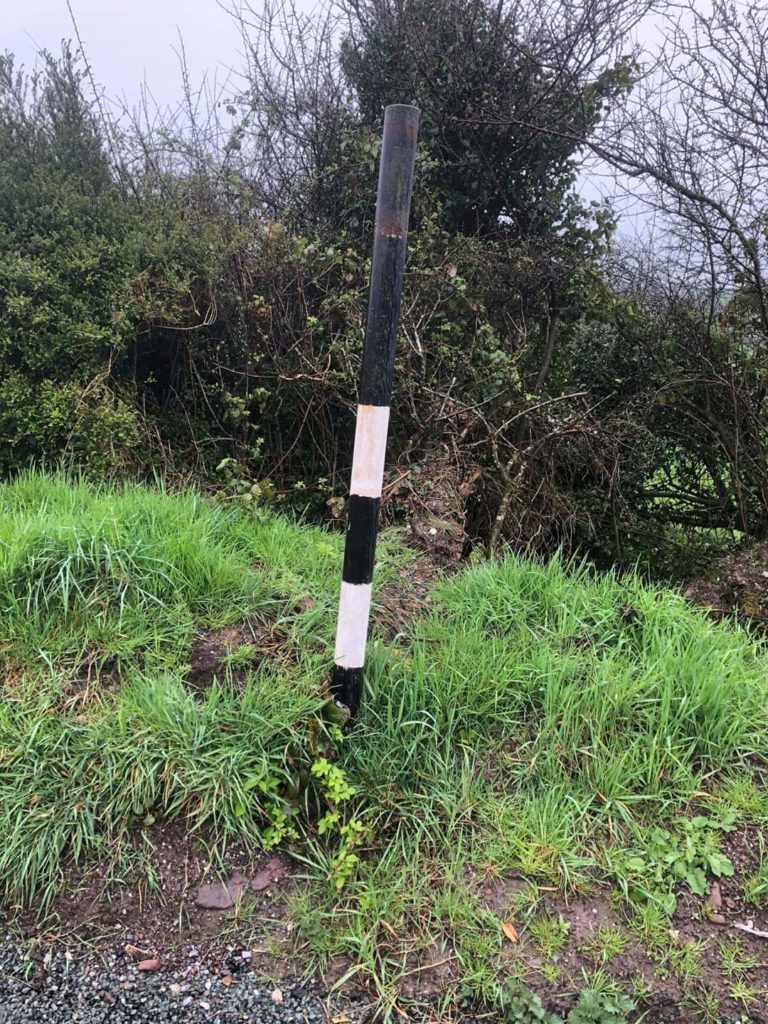

A cast iron directional sign pointing the way to one of the most significant battle sites in modern Irish history has been returned.
Frontpagenews.ie reported the theft of the only remaining signpost guiding visitors to the battle of Clonmult site last evening.
Overnight the historic sign was reinstated at its roadside location near Midleton.
The Clonmult Ambush Committee have thanked everyone who liked, commented and shared their plea for information leading to the whereabouts of the directional sign.
The heritage group reported the sign post’s disappearance late Saturday night from the end of the Boreen, leading to the farmhouse outside Dungourney, where Republican forces recorded the heaviest loss of life in a single conflict, 99 years ago.
The group also thanked the “taker” for having a change of heart.
“Some things can be replaced” they said, “but will never be the same.”
A total of 22 people died in the battle and subsequent executions – 14 IRA members, 2 Black and Tans and 6 suspected informers.
Operating on intelligence, at 4:15 pm on Saturday 20 February 1921, a two-vehicle mobile patrol unit, from the second Battalion Hampshire regiment and members of the local Royal Irish Constabulary (RIC) surrounded the house.
The flying column of the fourth battalion Cork number one brigade under the command of Diarmuid O’Hurley was about to head south to Leamlara to be closer to Cobh Junction, being tasked to ambush a military train en route to Cork on Tuesday 22 February.
The offensive by crown forces on the Clonmult farmhouse was a retaliatory action for the columns attack on a large foot patrol of RIC and Black n Tans on the main street in Midleton in December 1920.
In the course of that conflict Constable Mullins from Youghal was killed along with 2 Black n Tans, Constables Dray and Thorpe, a further three were seriously wounded.
Plans are already in place for a weeklong event to mark the centenary of the Clonmult ambush in 2021.
The location also operated as a base for the IRA first battalion (east Cork) for training volunteers, and the collection of funds the organisation had levied on farmers and landowners in the greater East Cork area.
Critically there was just one entrance to the dwelling house, which was a major contributing factor for the loss of life.